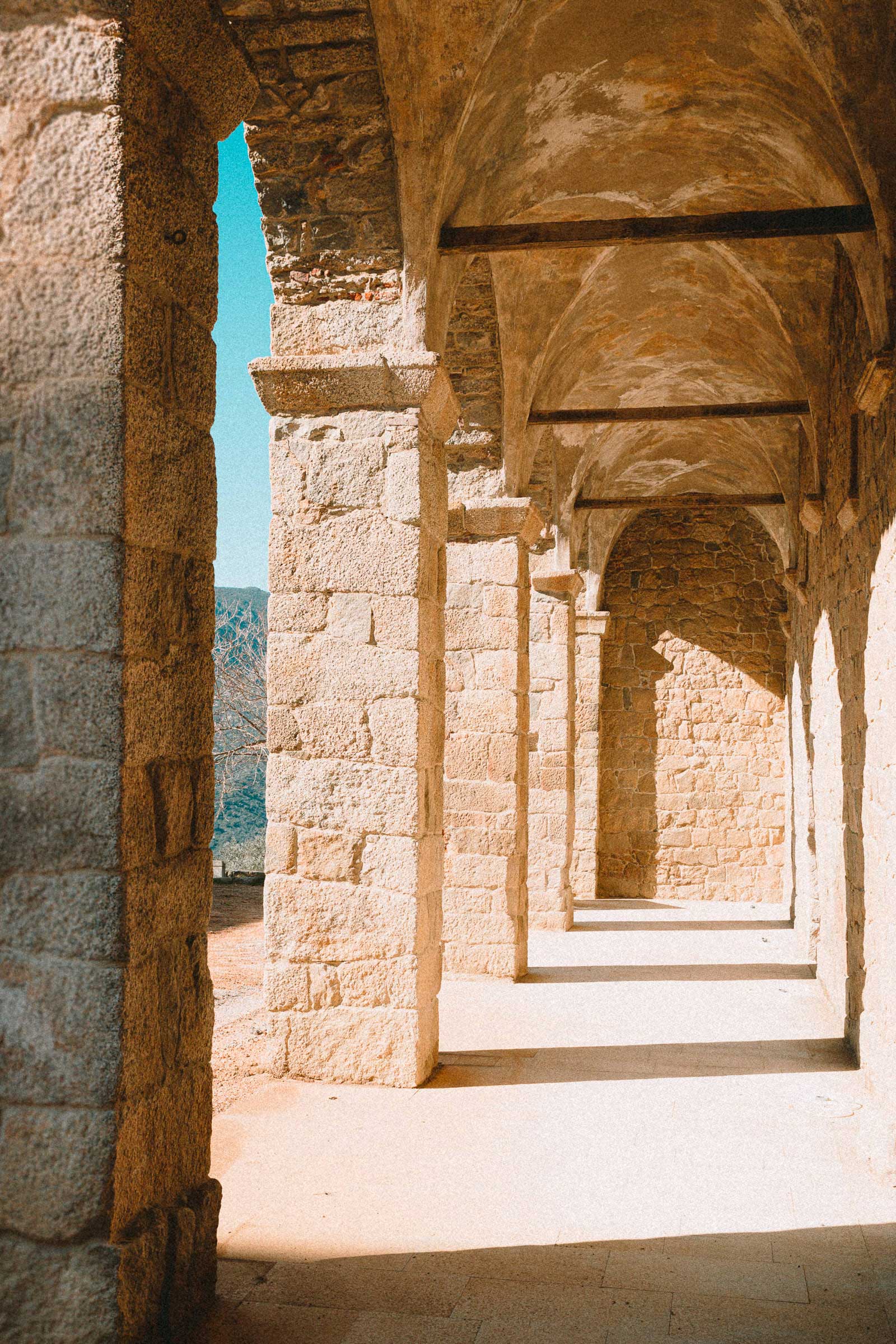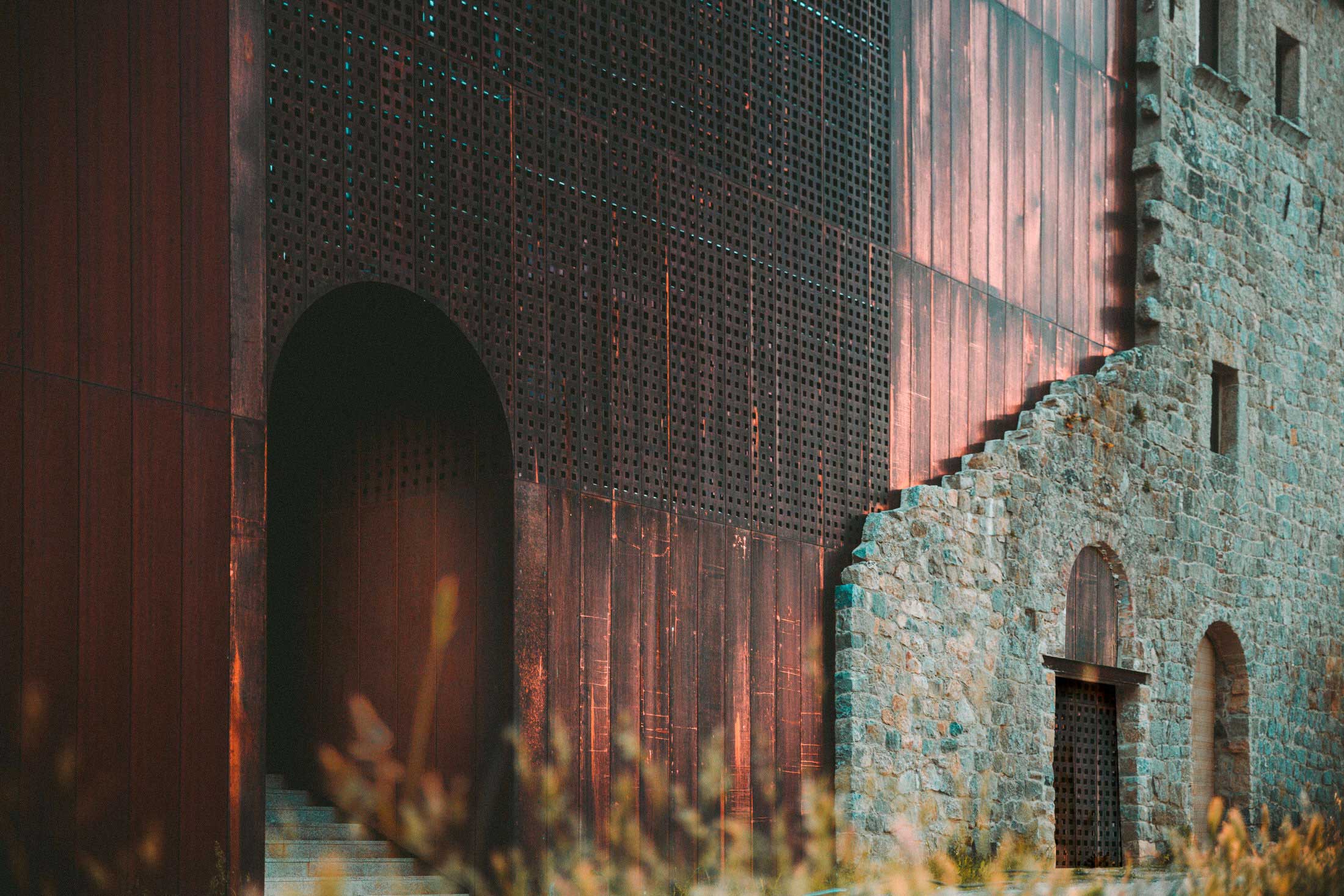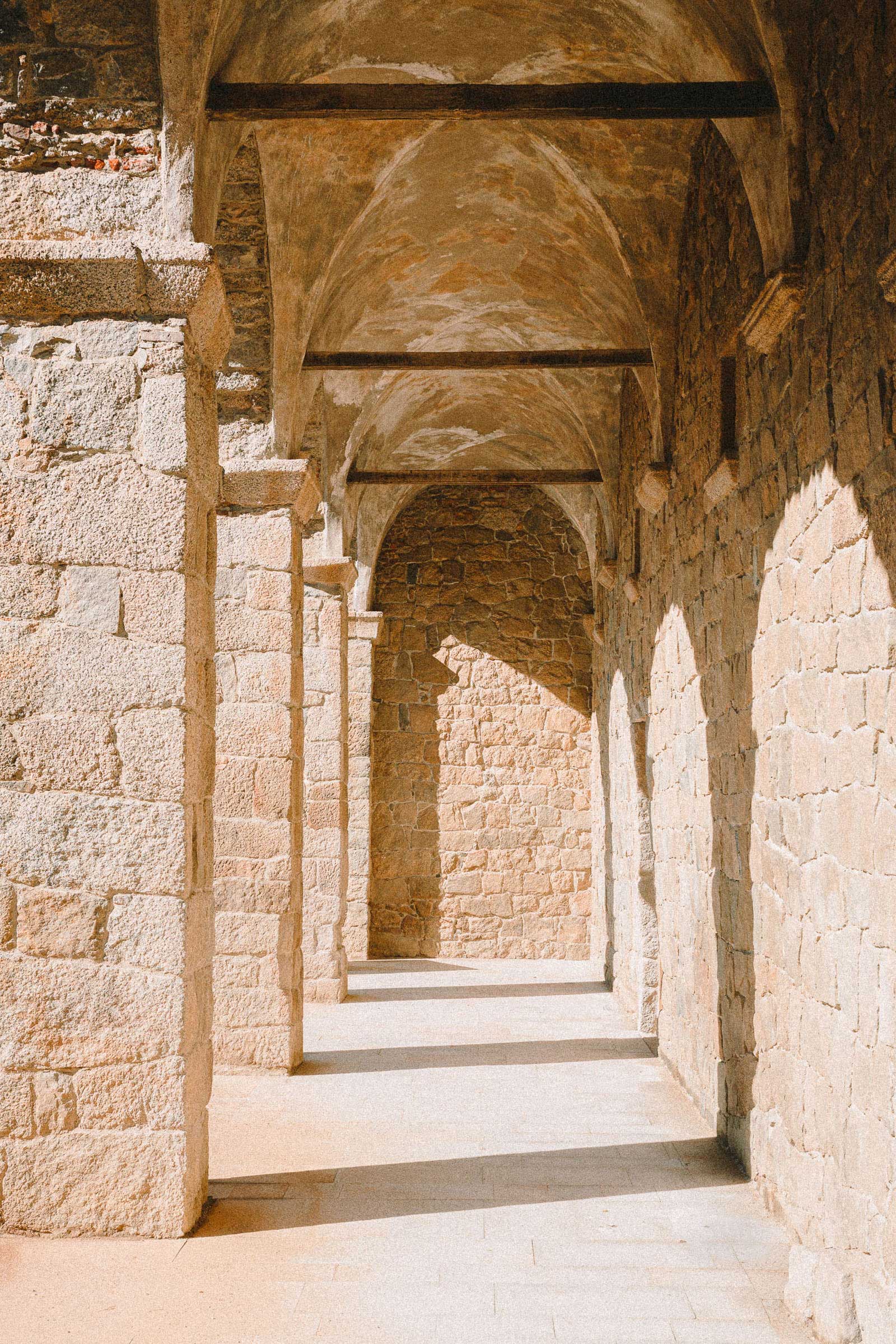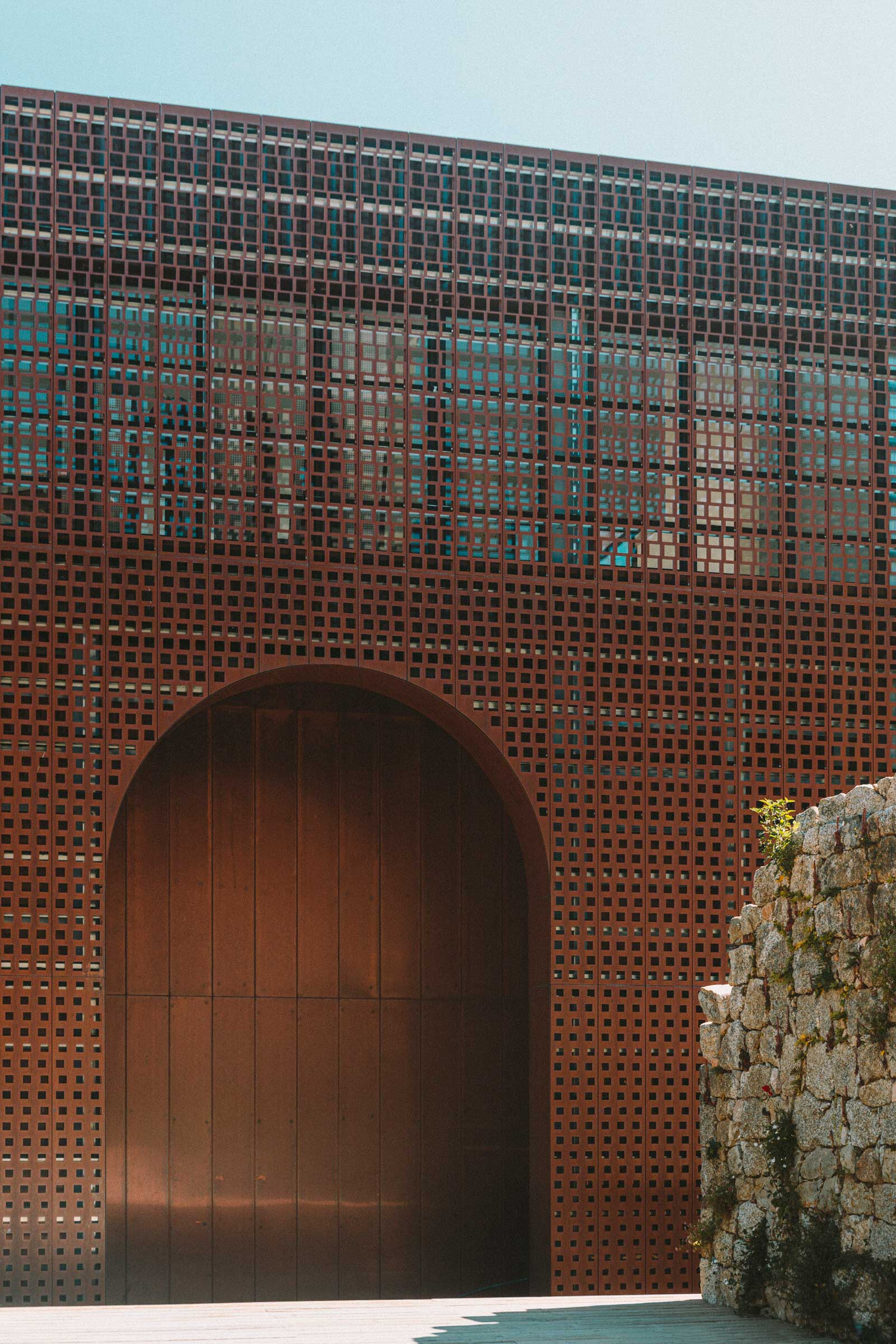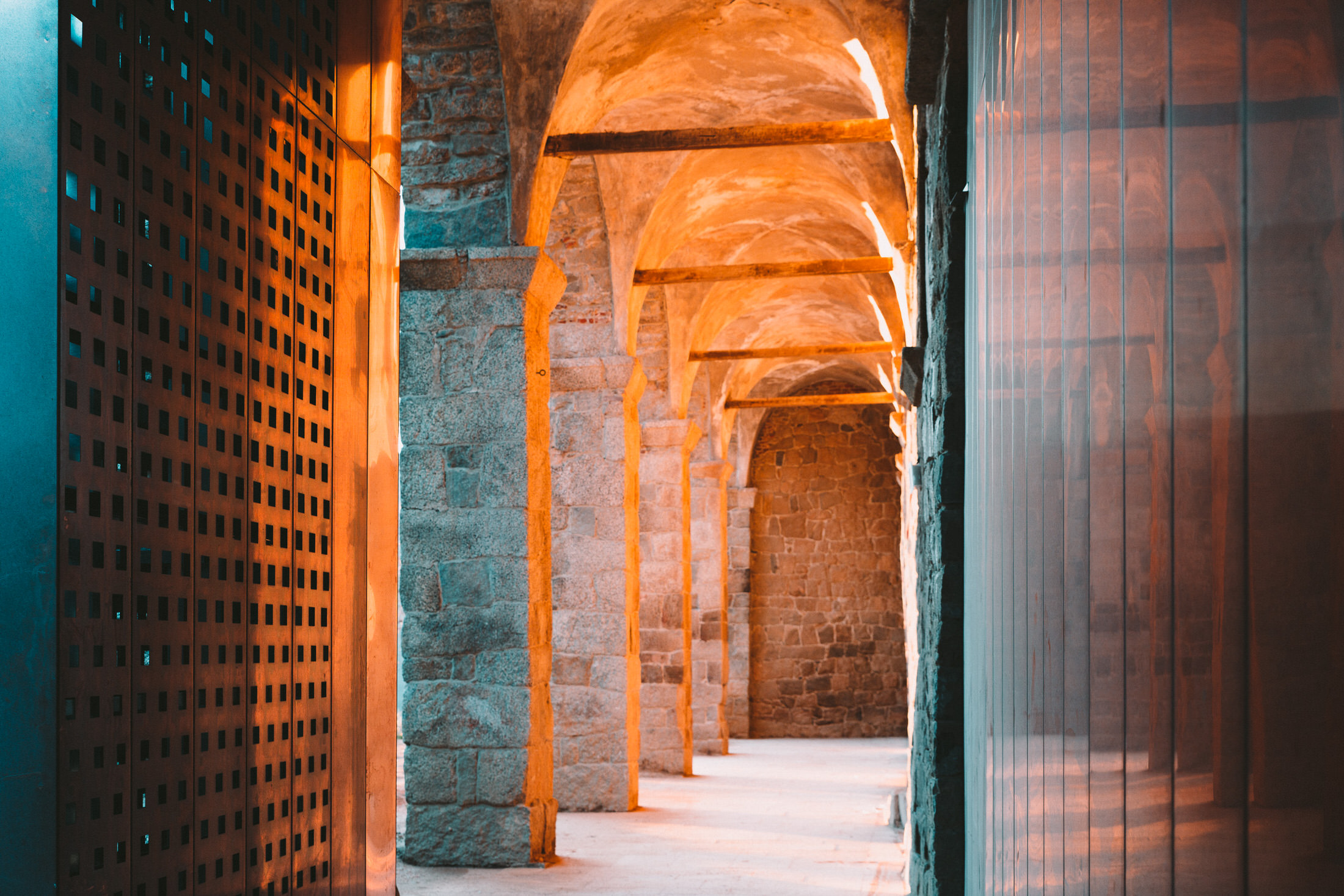
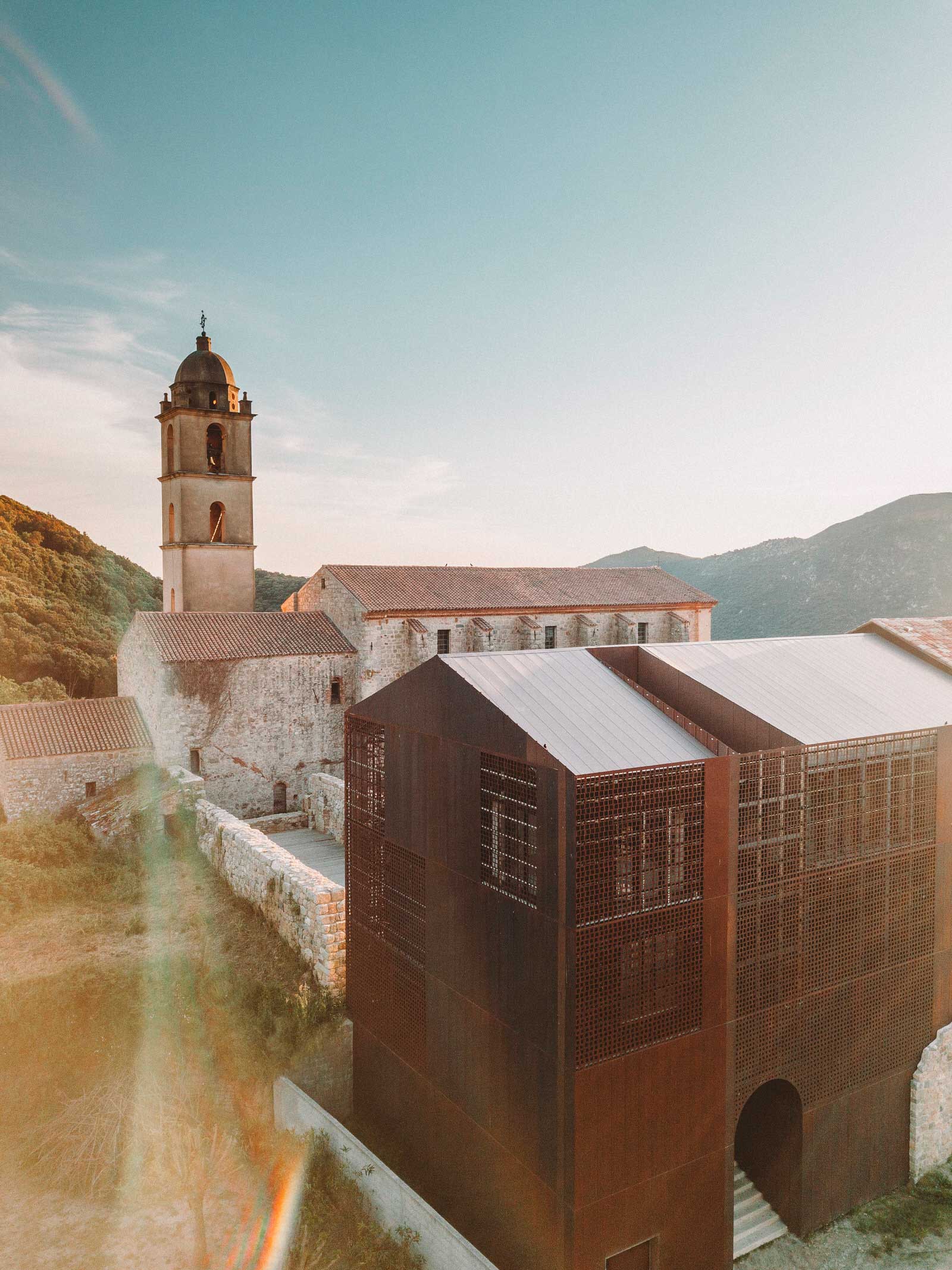
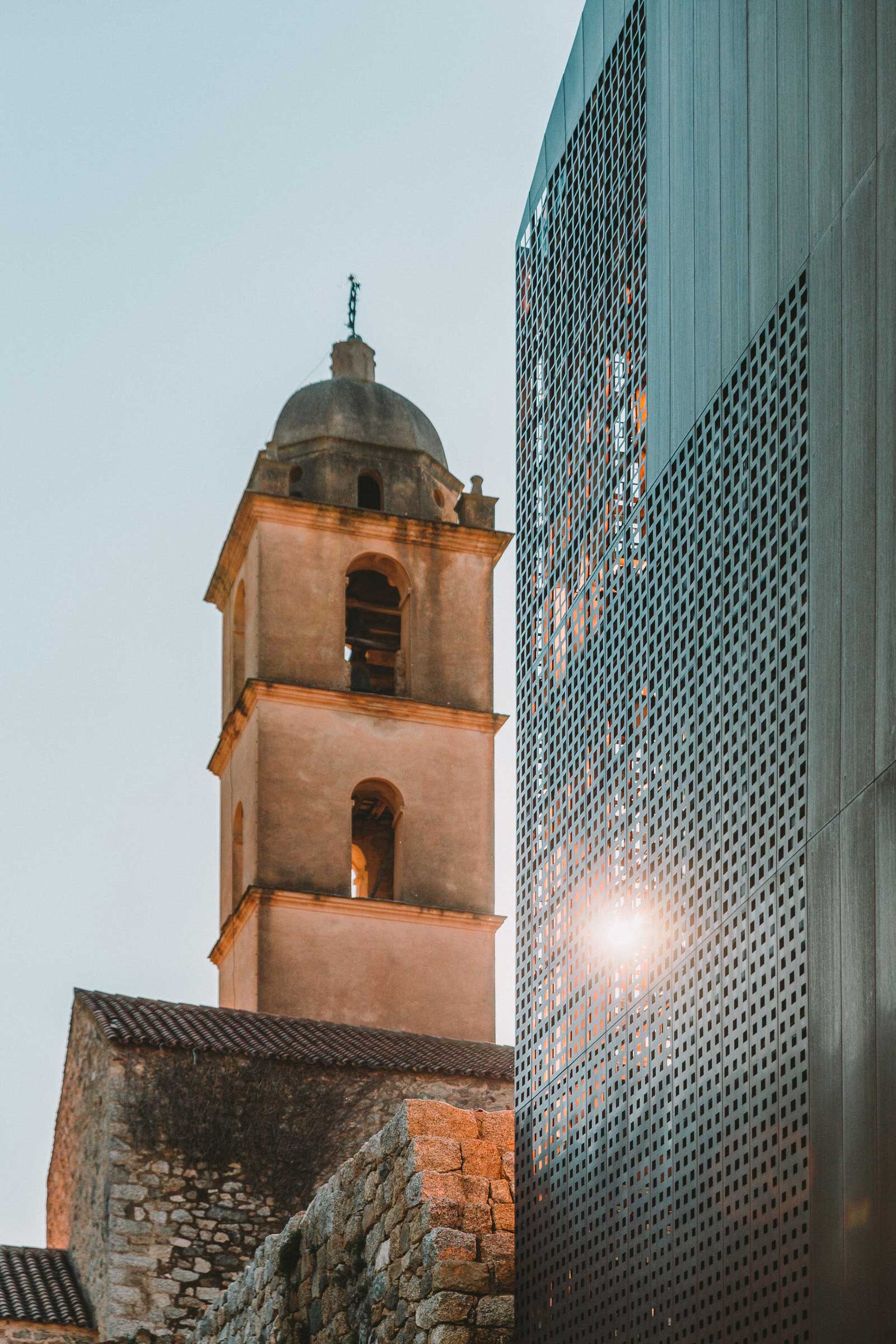
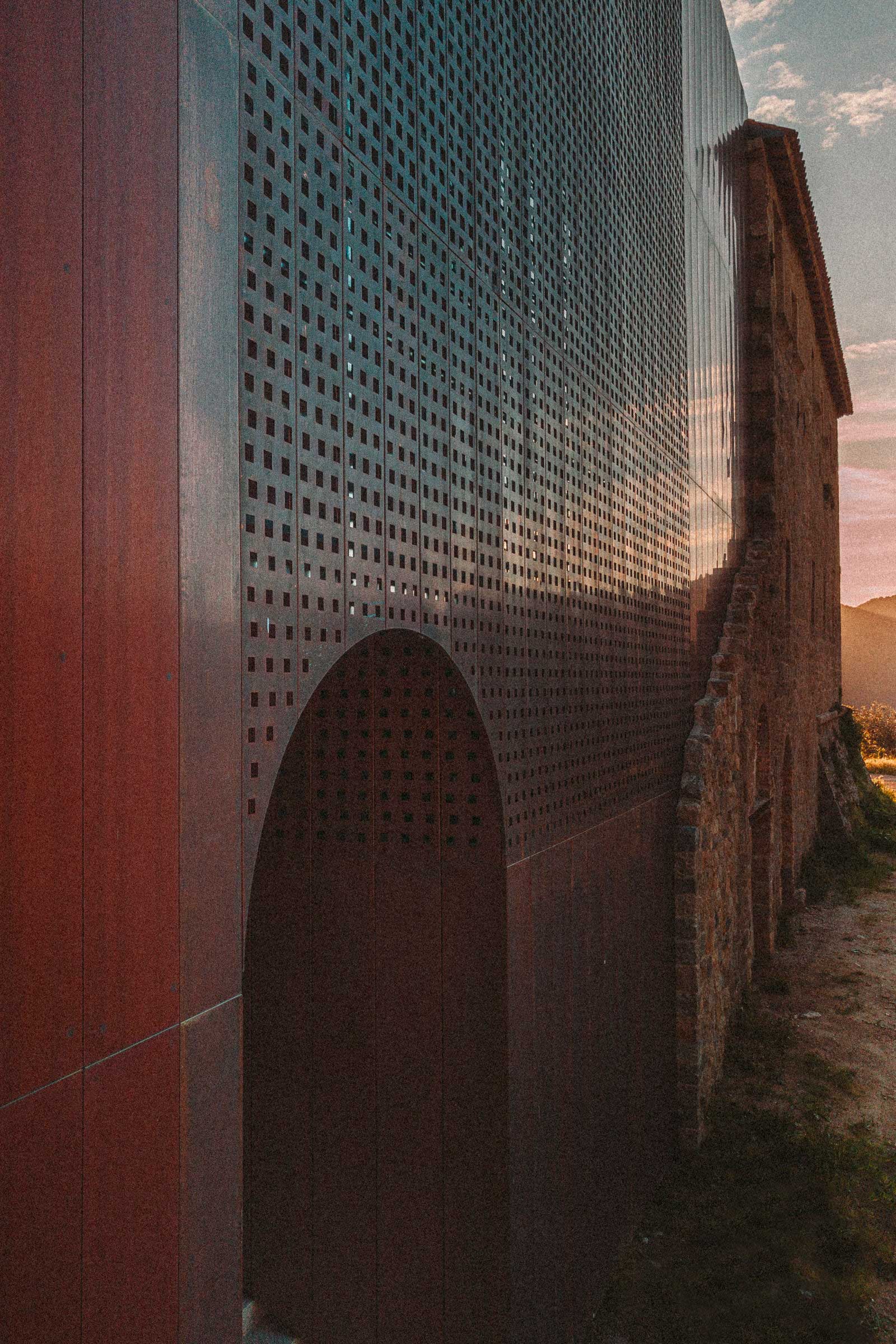
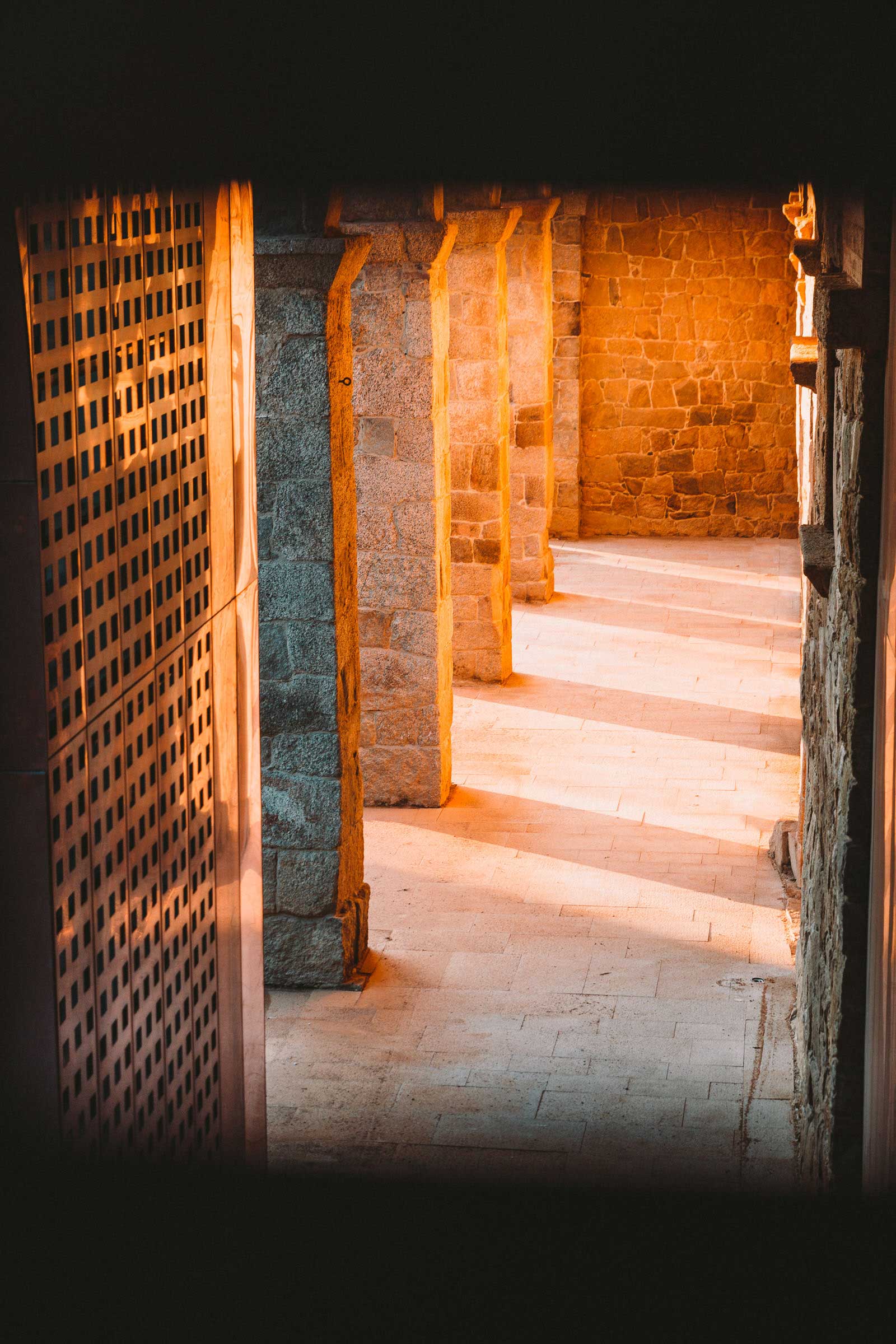
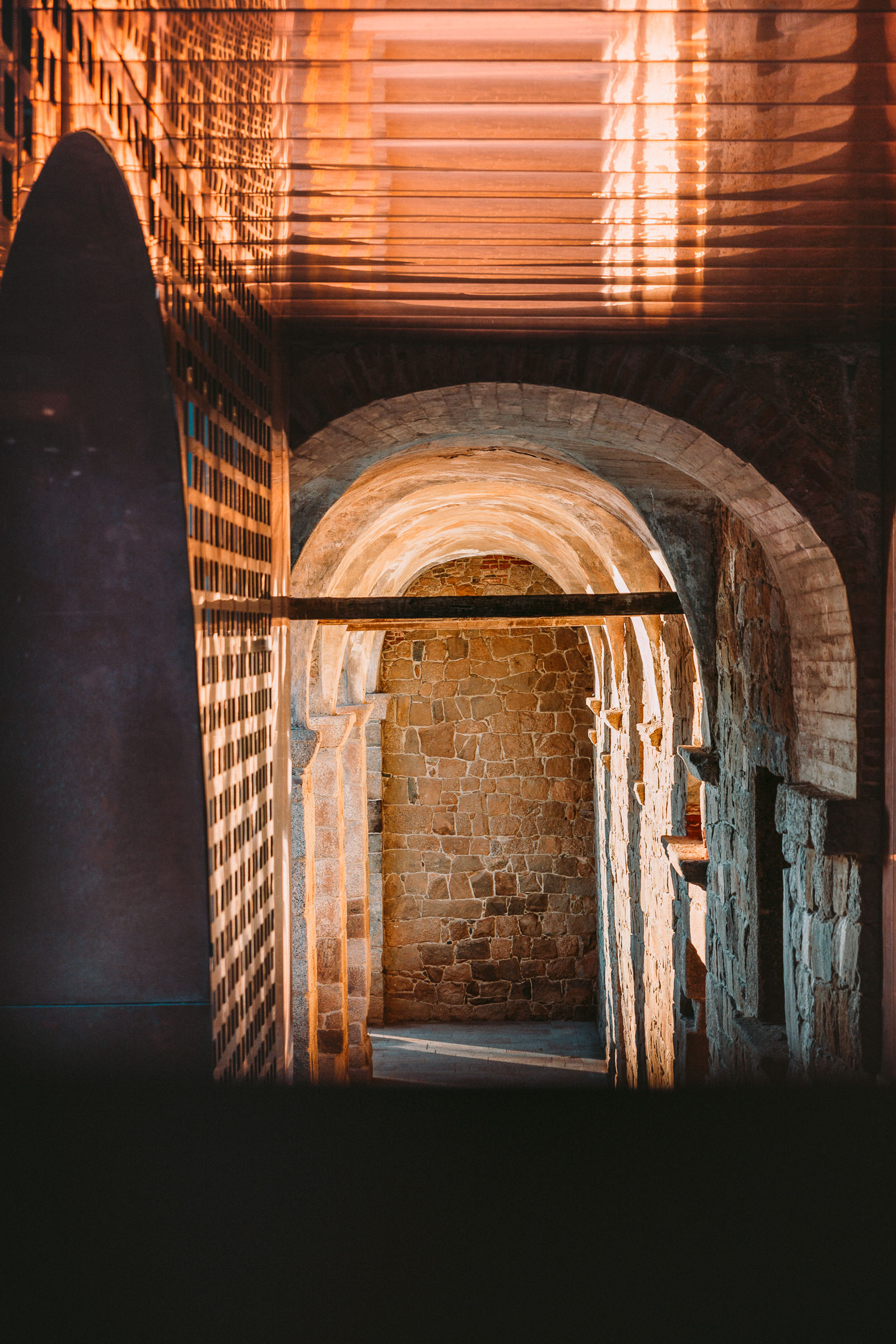
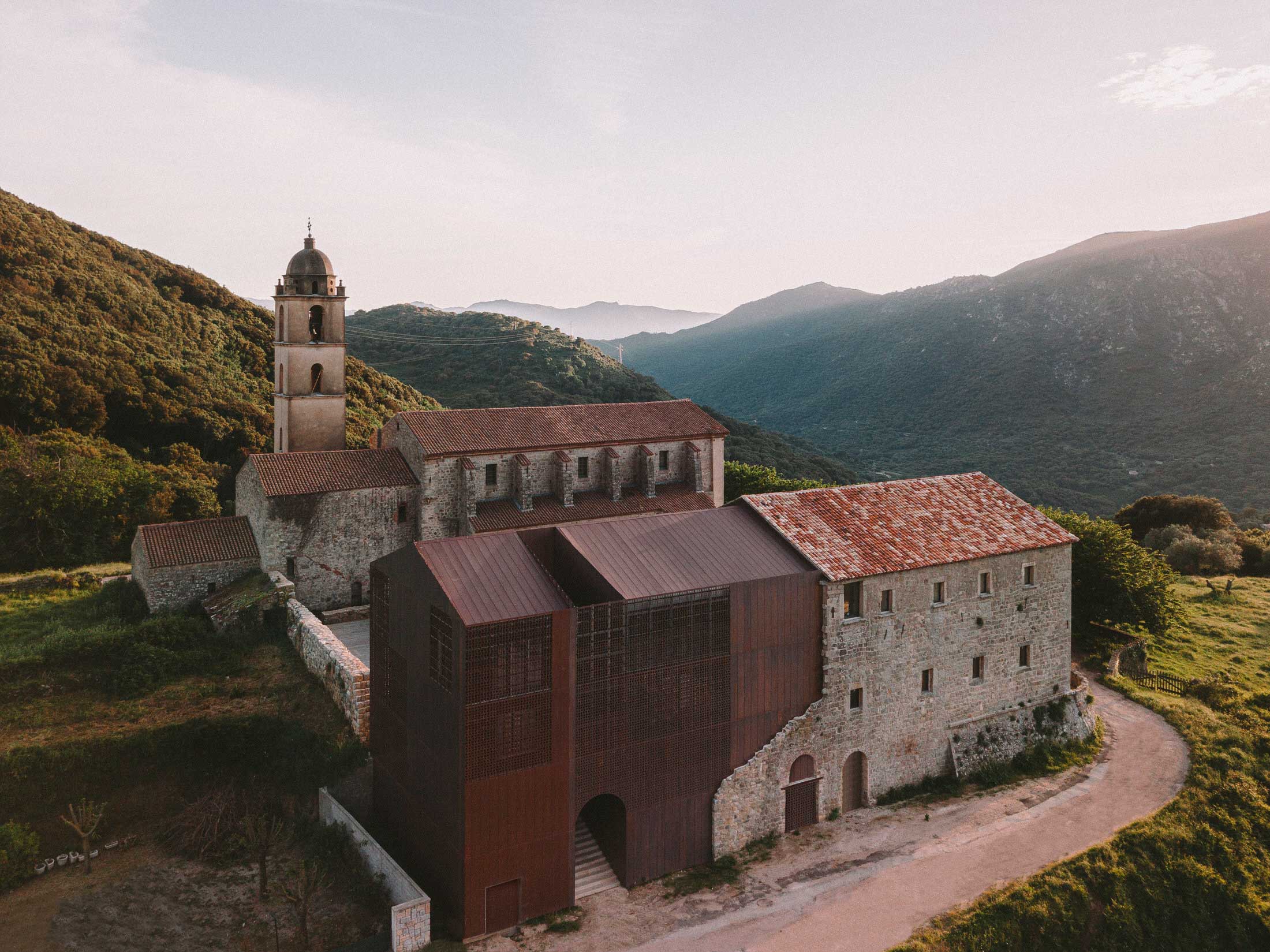
The Convent Saint-François, located on the French island of Corsica, looks like a modern-day, Mediterranean version of The Sound of Music—with everything besides Maria and the von Trapp pack in attendance. Old it might be, but there’s absolutely nothing old-fashioned about this 1,000-square-metre castle-turned-convent that dates back to 1480. So much so, that a copper honeycomb veil sits over the structure like a second skin, channelling a fantastically outré flair.
“It had lain partially ruined and abandoned for a very long time, and earned a listing as a historical monument,” says Corsica-born architect Amelia Tavella, who rehabilitated and extended the original structure to give it a contemporary avatar.
Ensconced between a cemetery and a charming hamlet, the convent “has a stage at the front and the back”. An olive grove emerges like an anklet at its feet, “like a happy garden of heavenly food,” muses Amelia. Ahead, the Corsican mountains present like a larger-than-life collage, “with a dizzying merry-go-round of passes and ridges that seem to move in the direction of the clouds and dress per the season. The beauty here is supernatural,” Amelia adds.
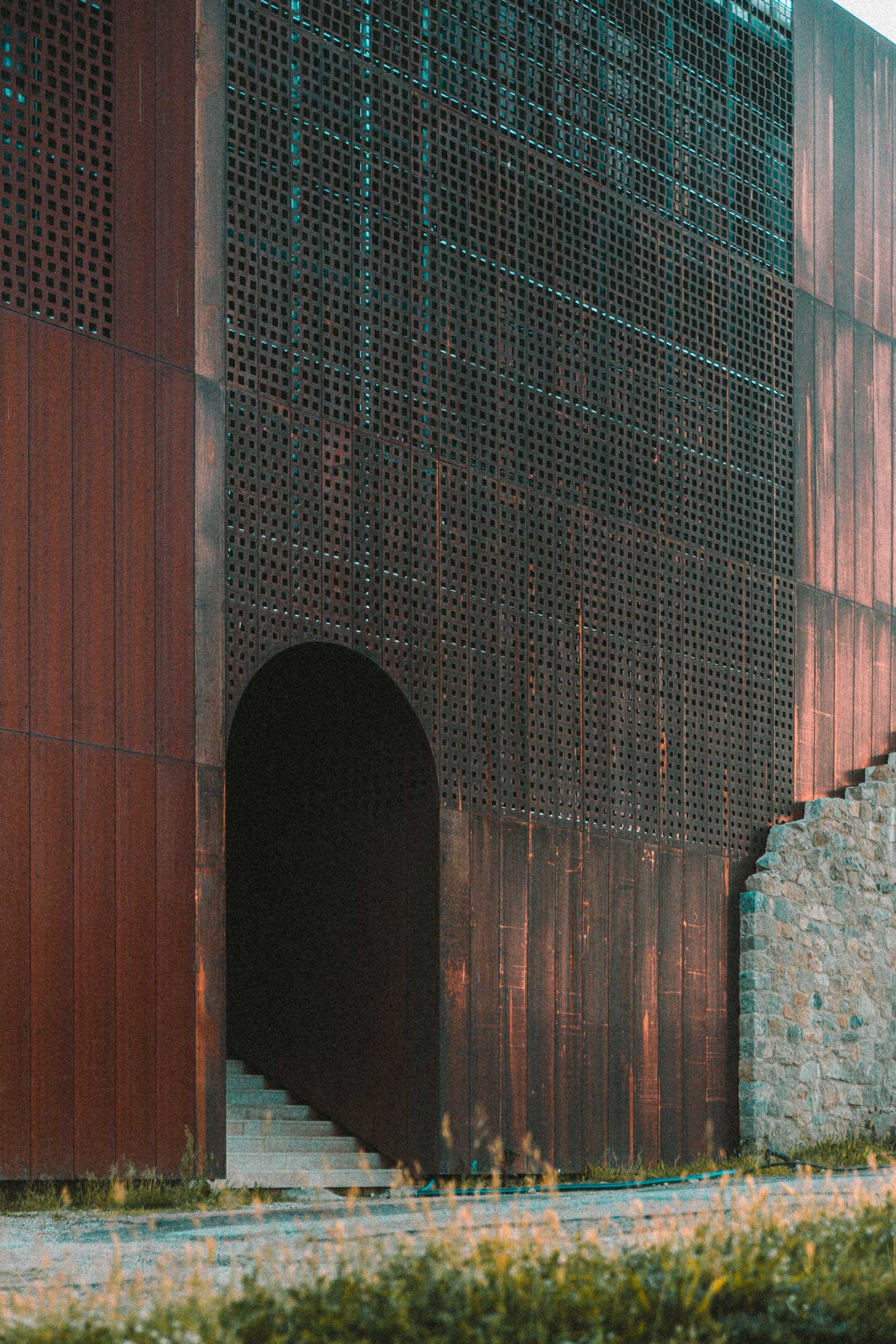
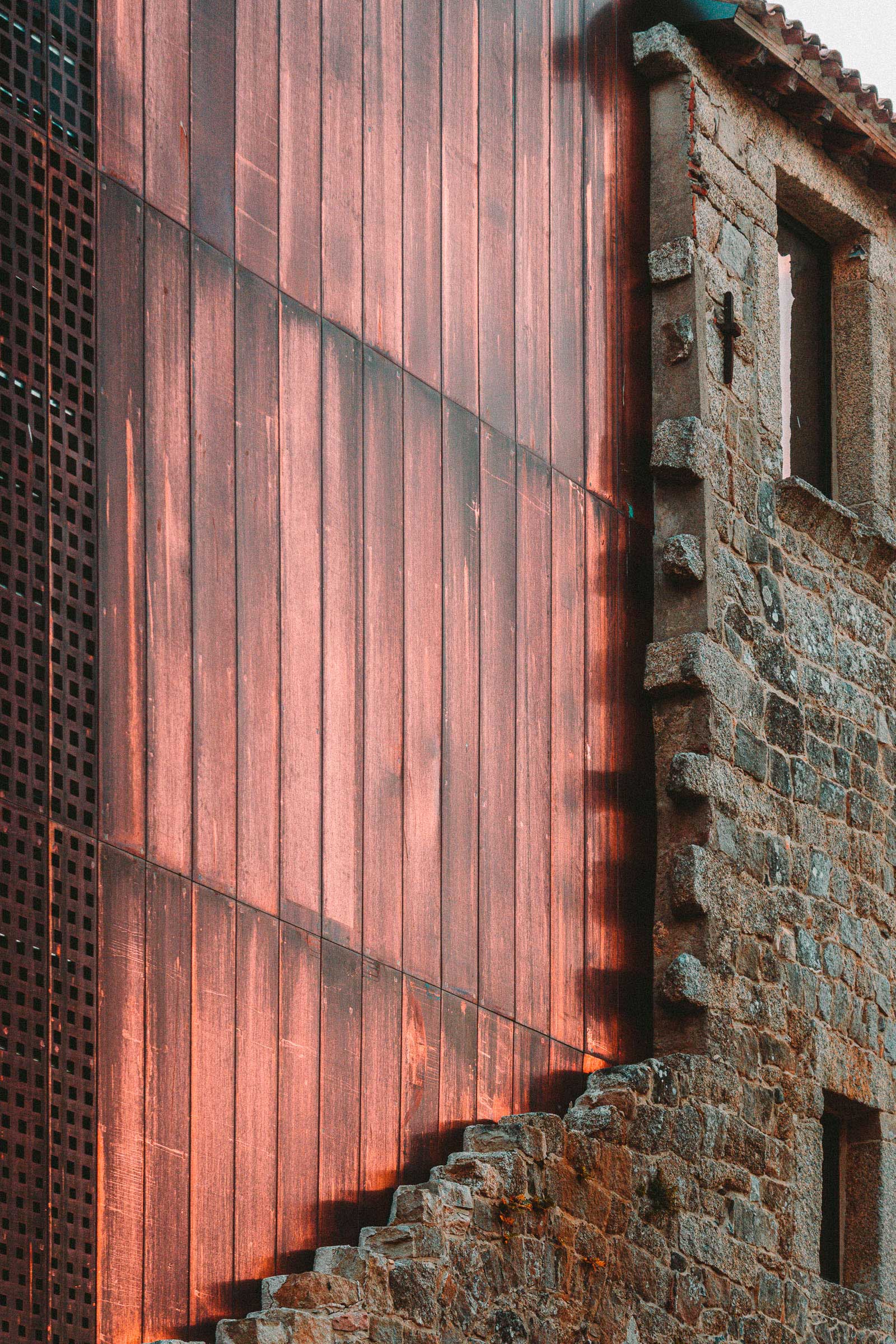
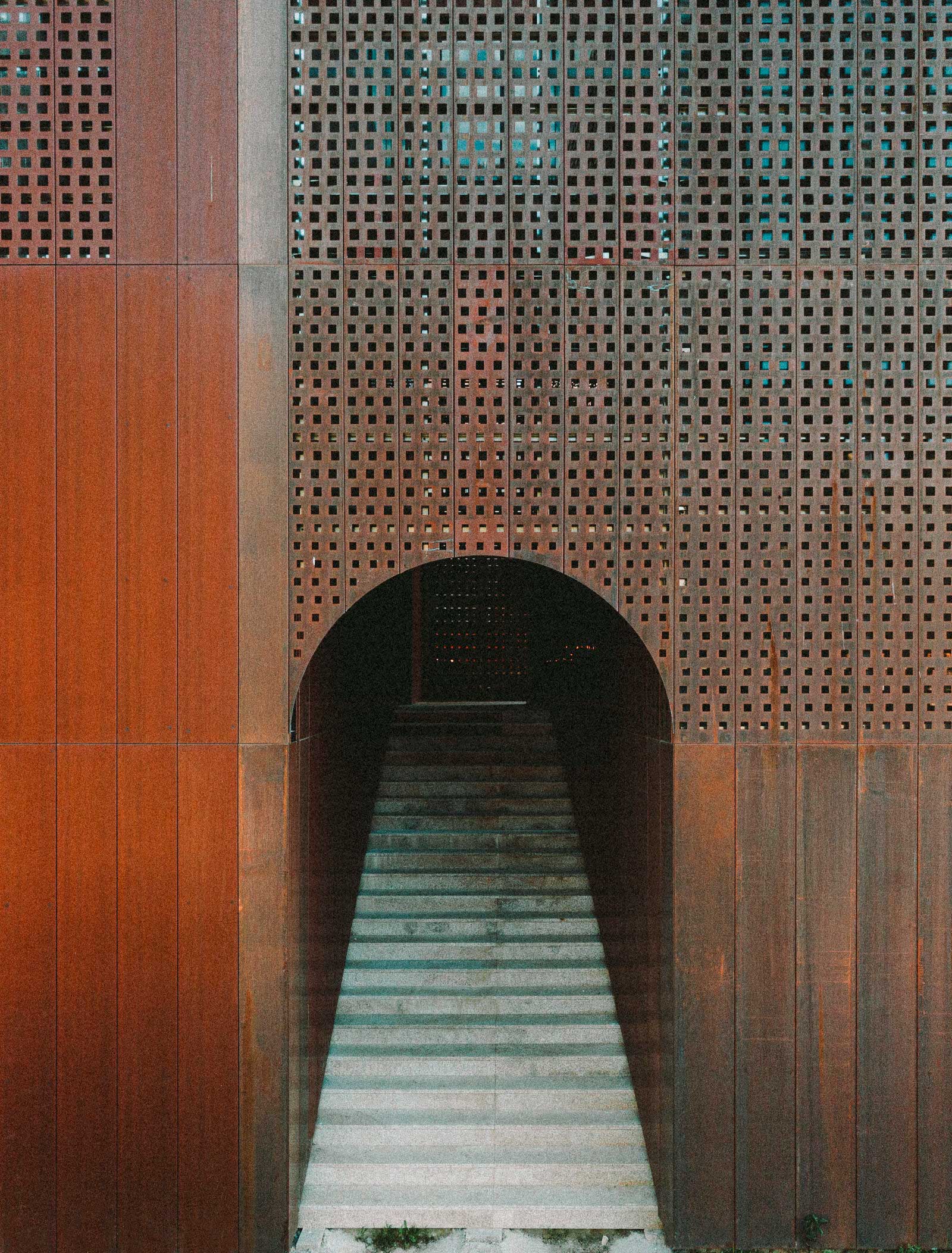

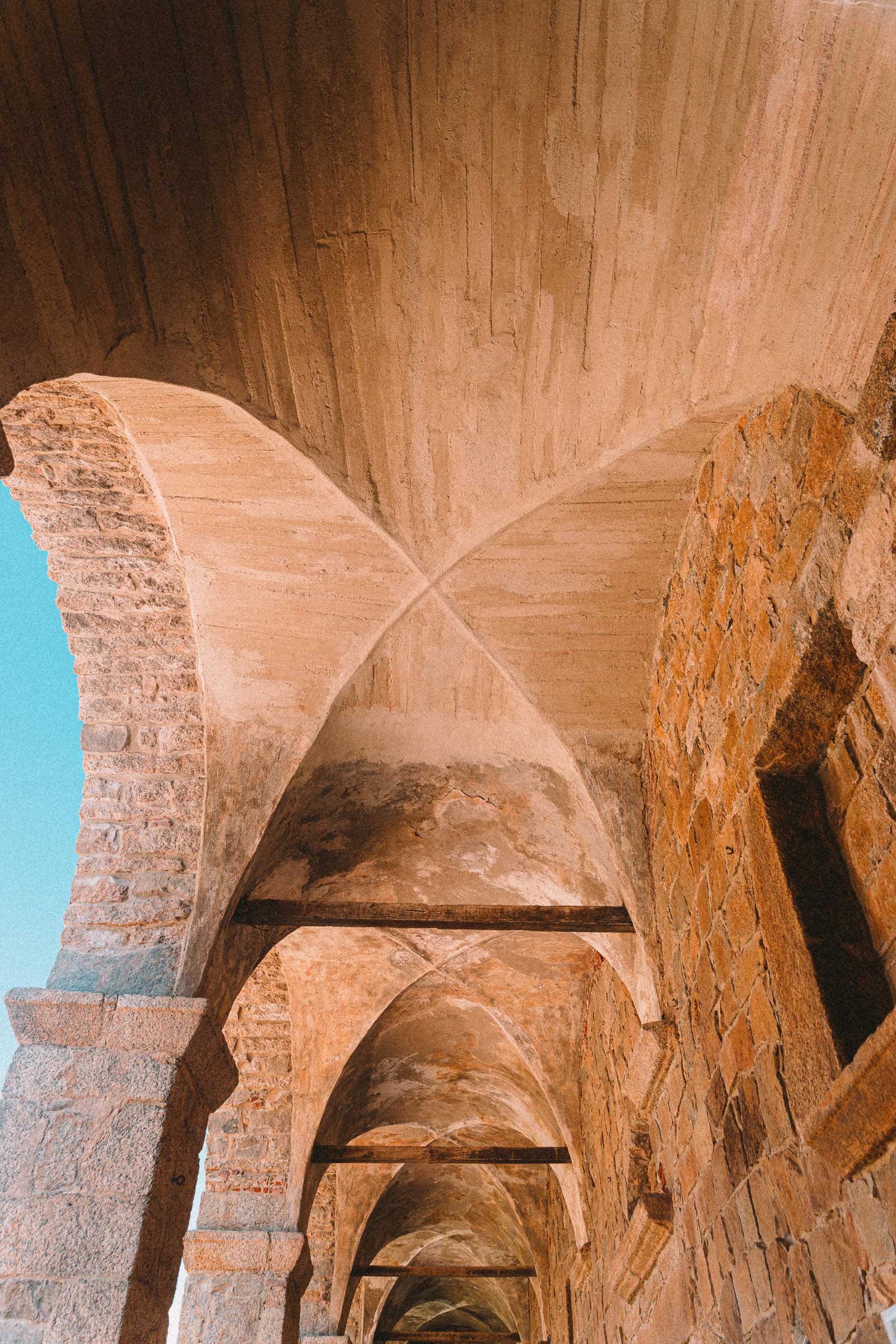
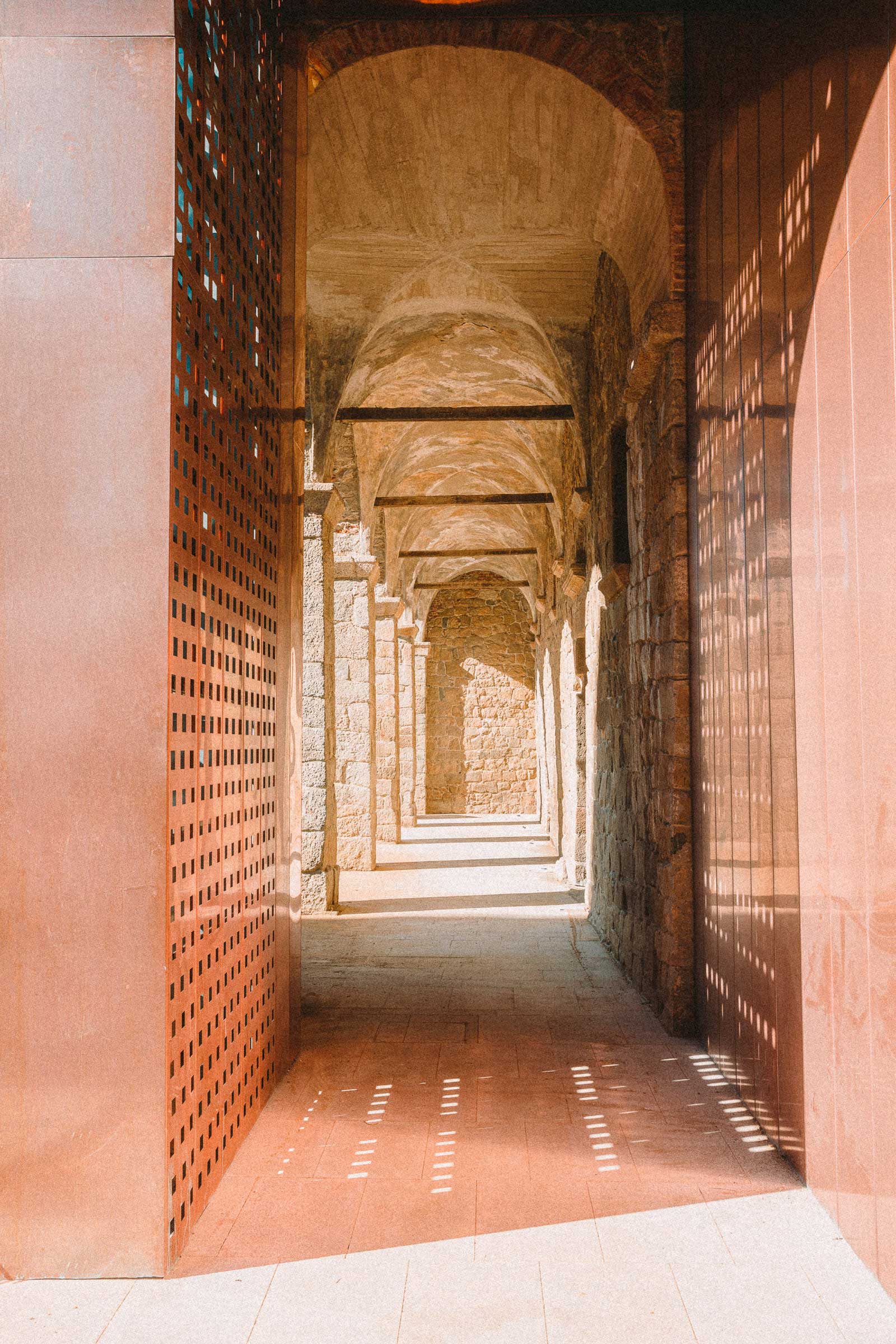
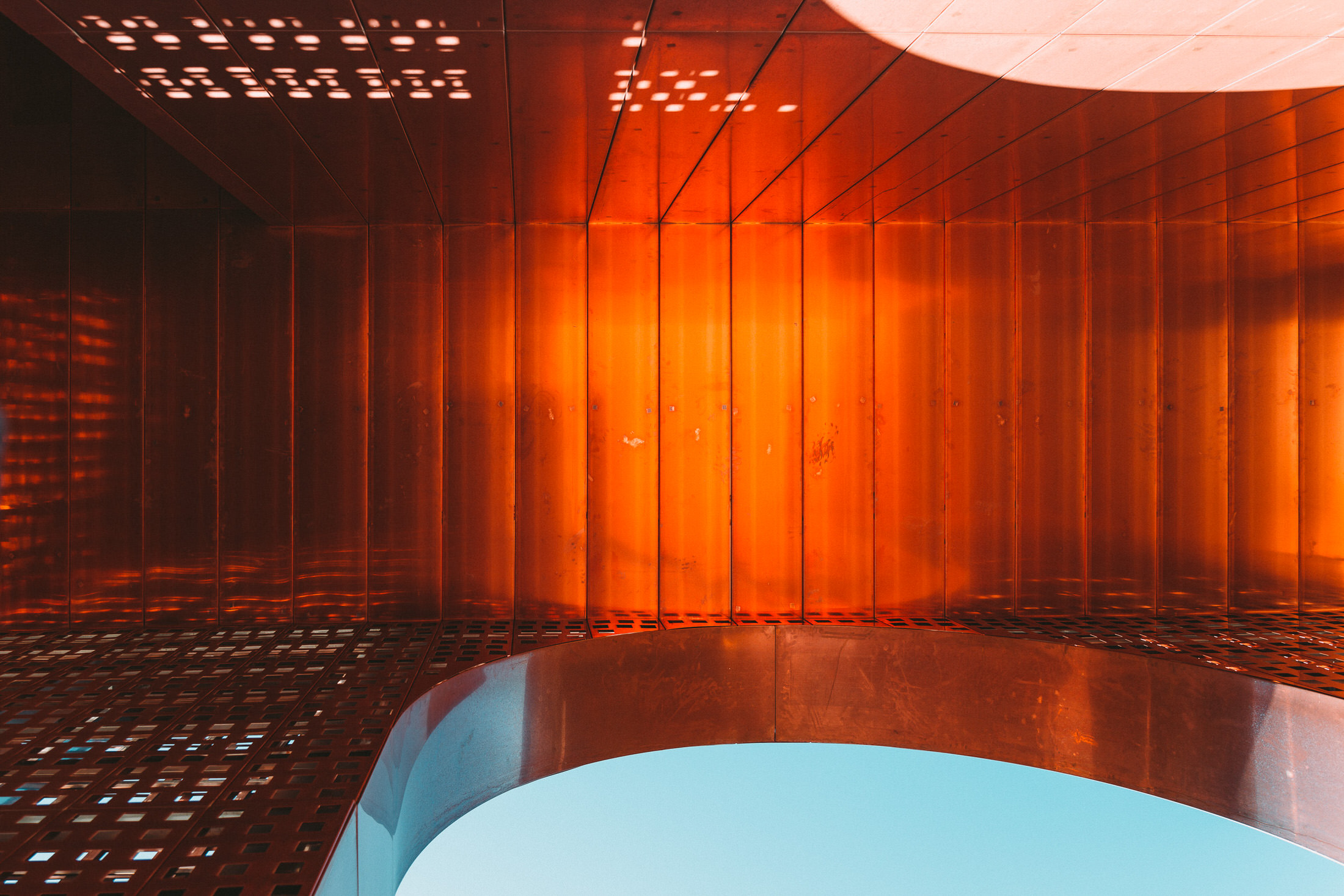
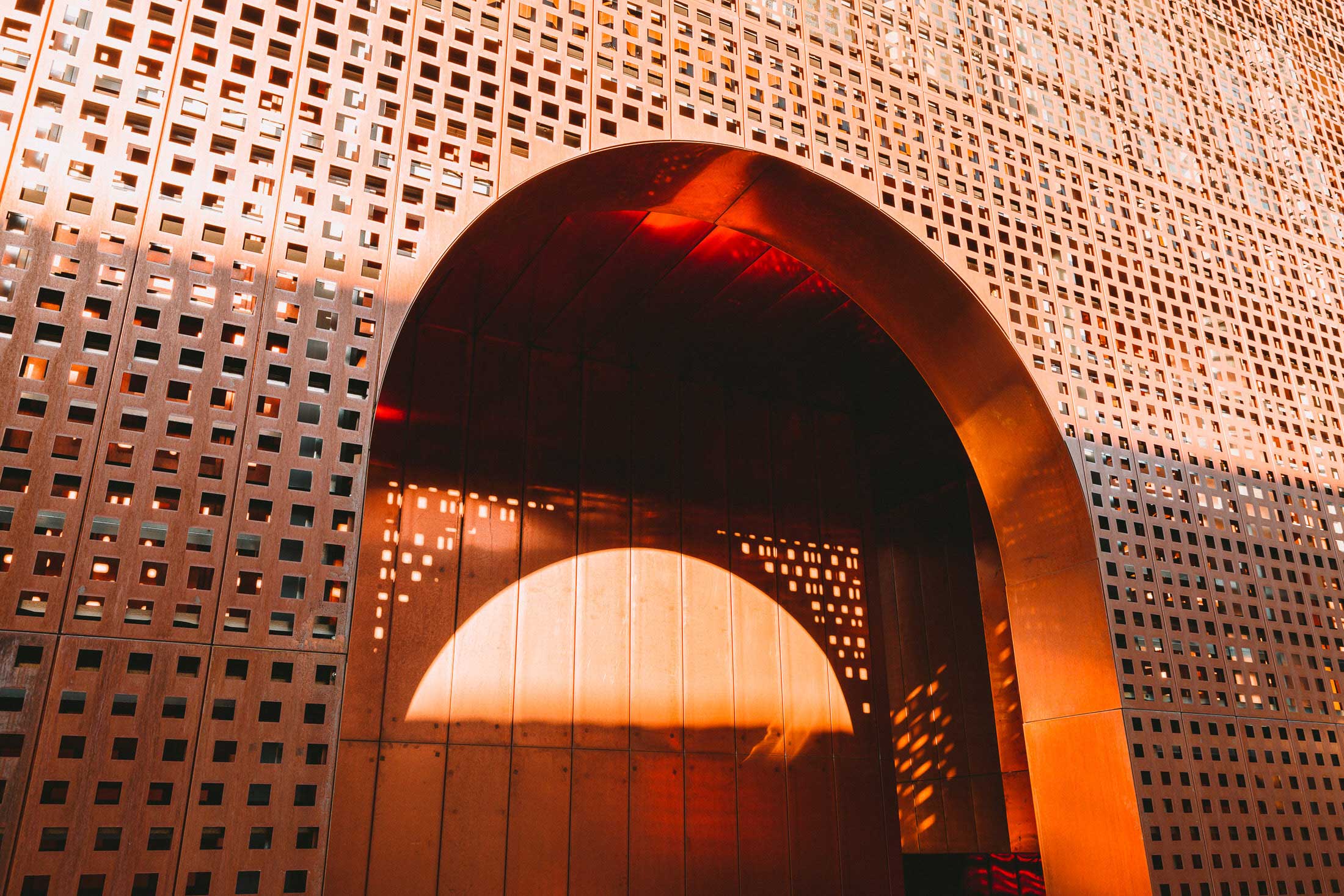
Amelia’s architectural sensibilities echo her live-and-let-live island upbringing. “I am a child of the maquis and the sand; the Mediterranean is my matrix. I use materials from the island to bring it back to life. I do not remove elements. After all, the ruins are masterpieces undone by time,” she reflects. Remarkably, the thing that stands out about Convent Saint-François is its ruins, which dazzle as brightly as the modern, copper-clad extension. “The ruins are marks, vestiges, imprints. Here, the past and the present embrace, making the promise never to betray each other. One becomes the other and neither one is erased,” she says.
Inside, nature creeps through the cracks, “like a soft armour that protects against erosion and collapse”. A fig tree takes pride of place as part of the facade. “It’s trunk and roots have formed a structural replacement for the limestone, which failed to stand the test of time. It was important to uphold the nature here, which protected the dormant building before its resurrection,” explains Amelia.

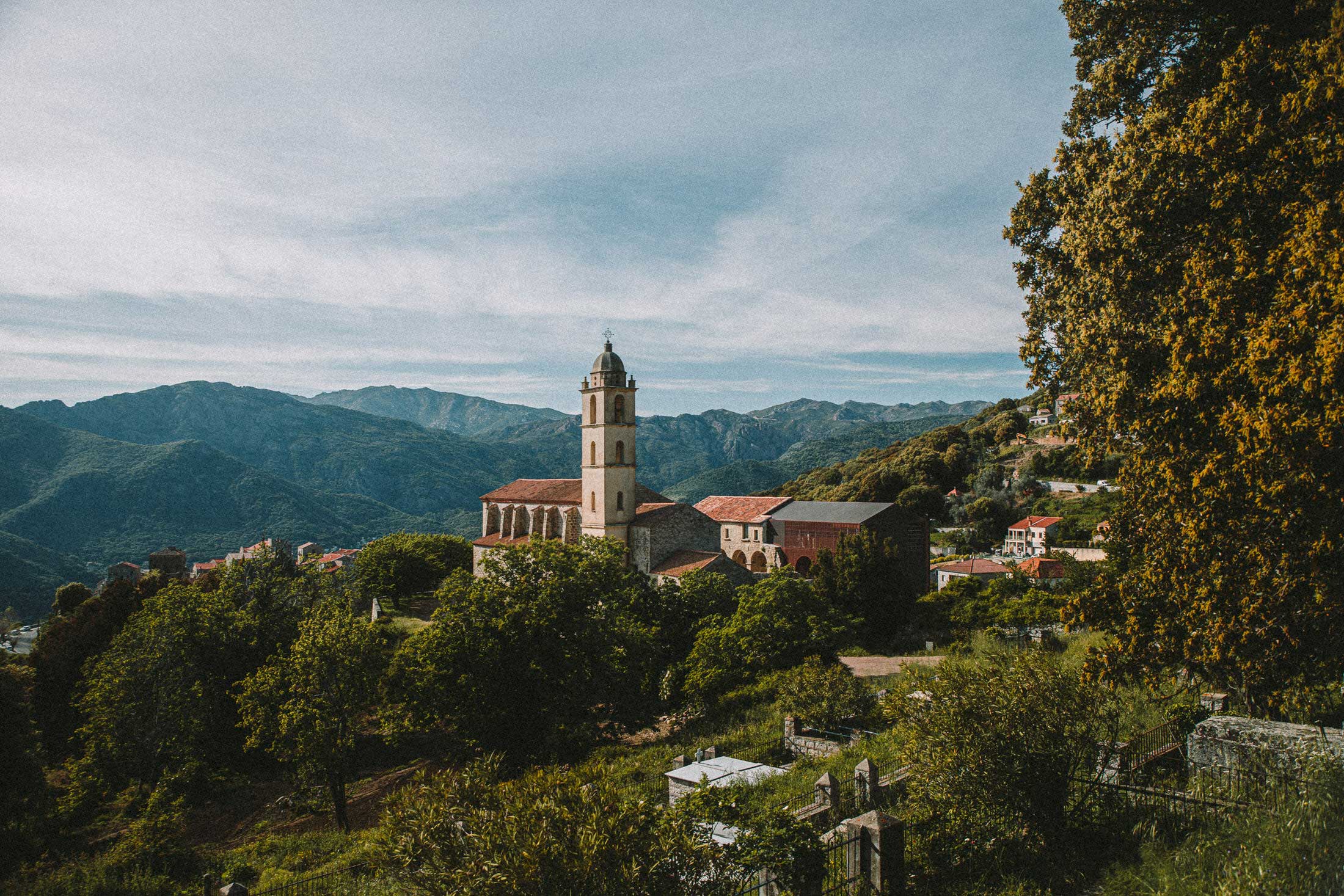
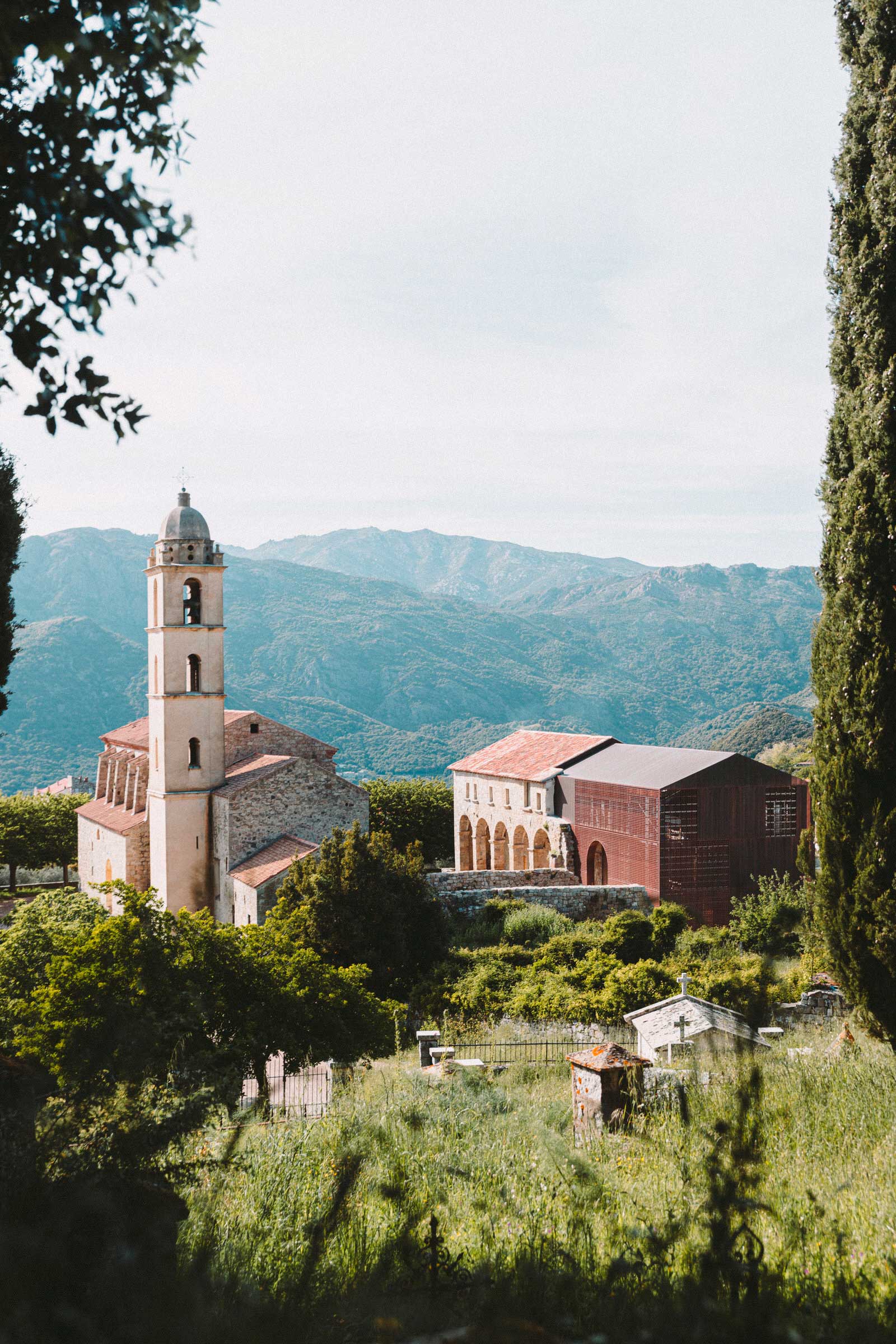
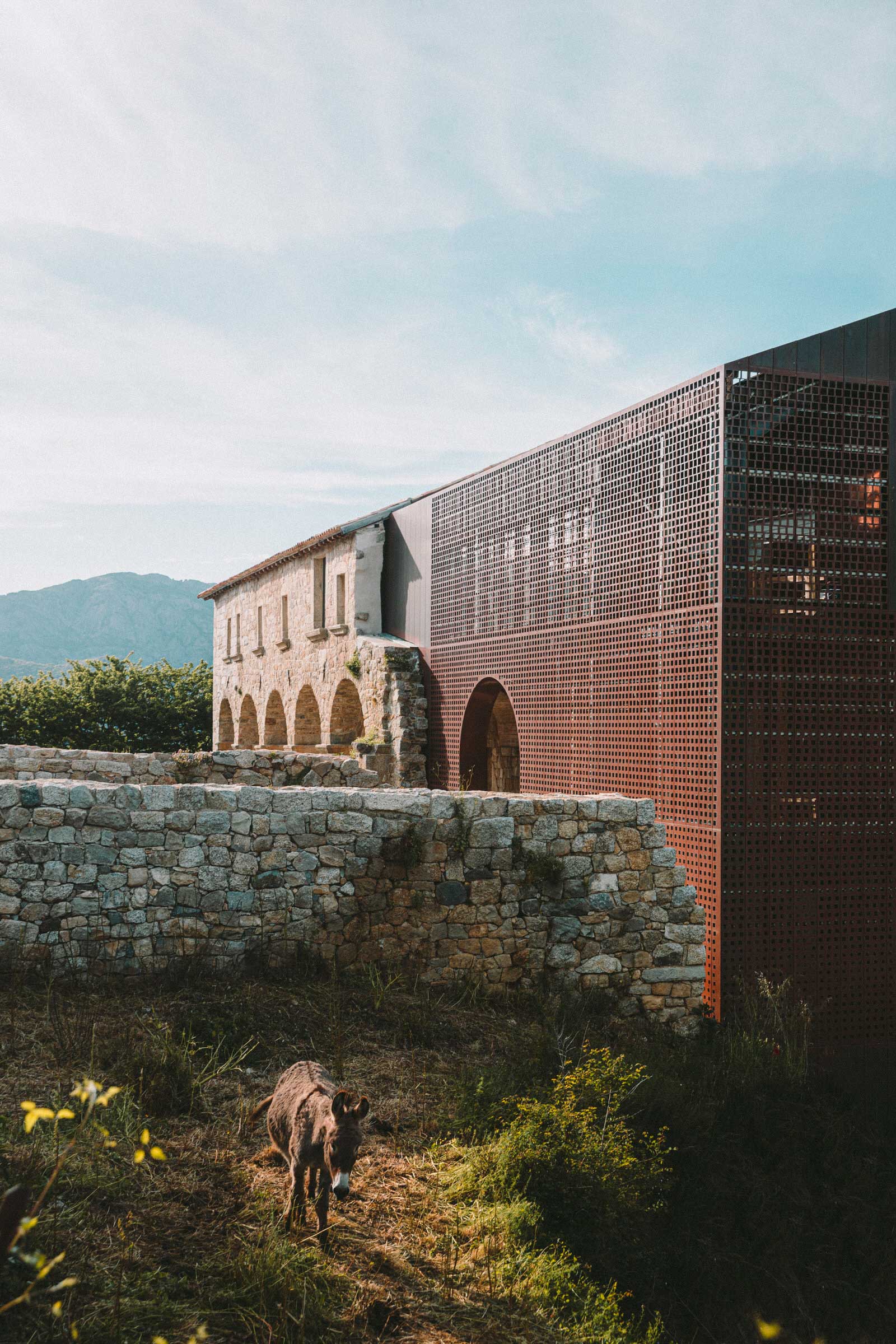
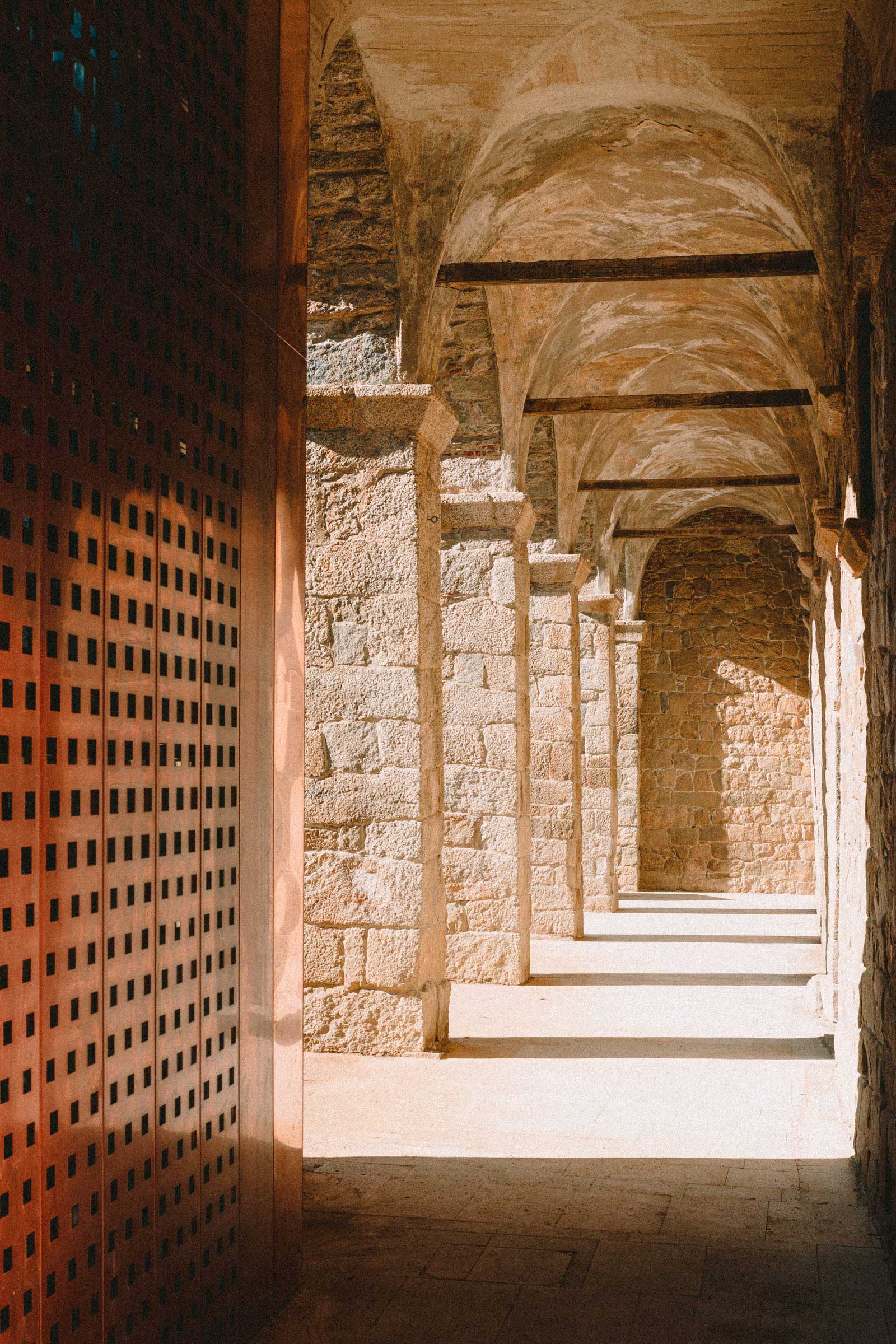
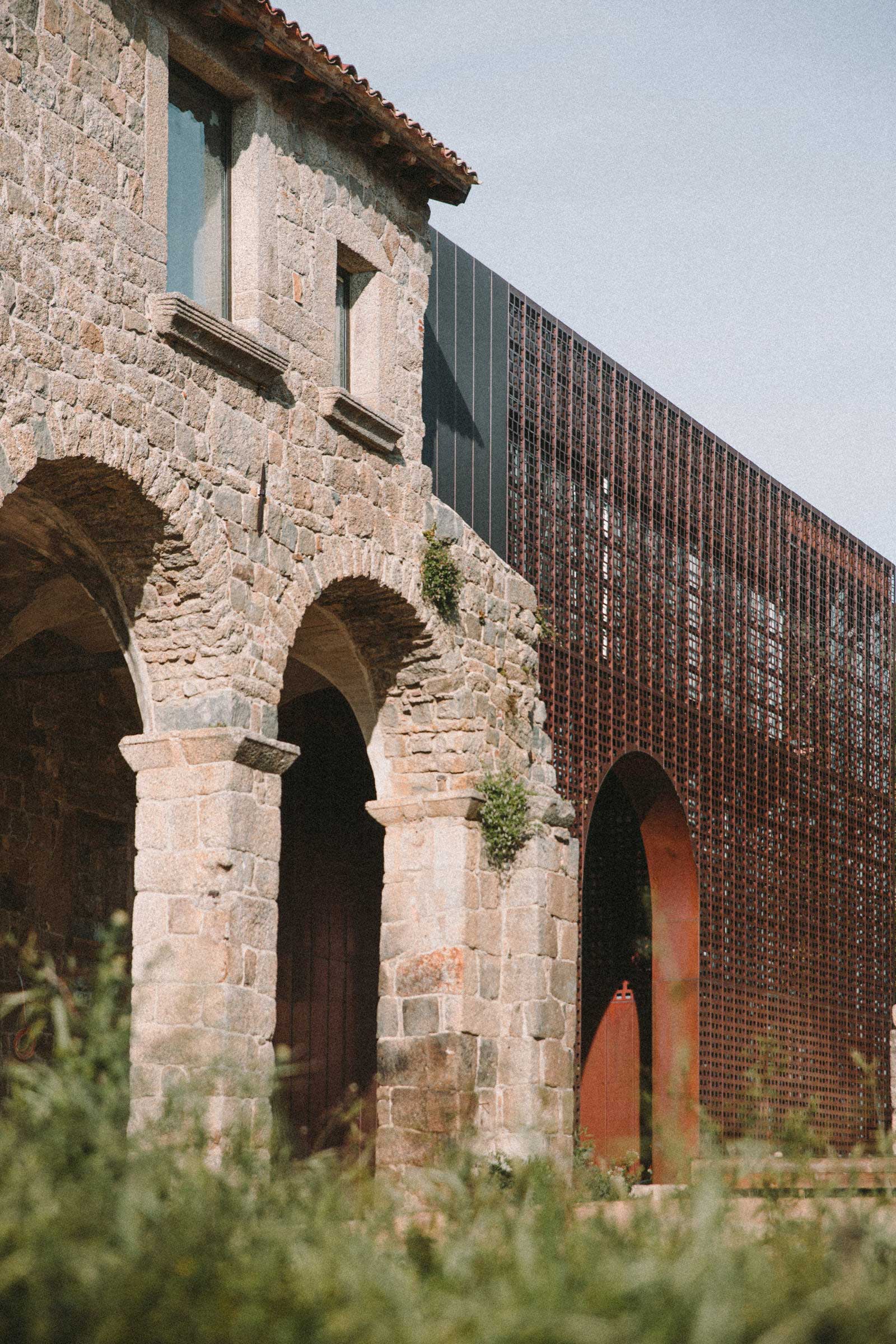
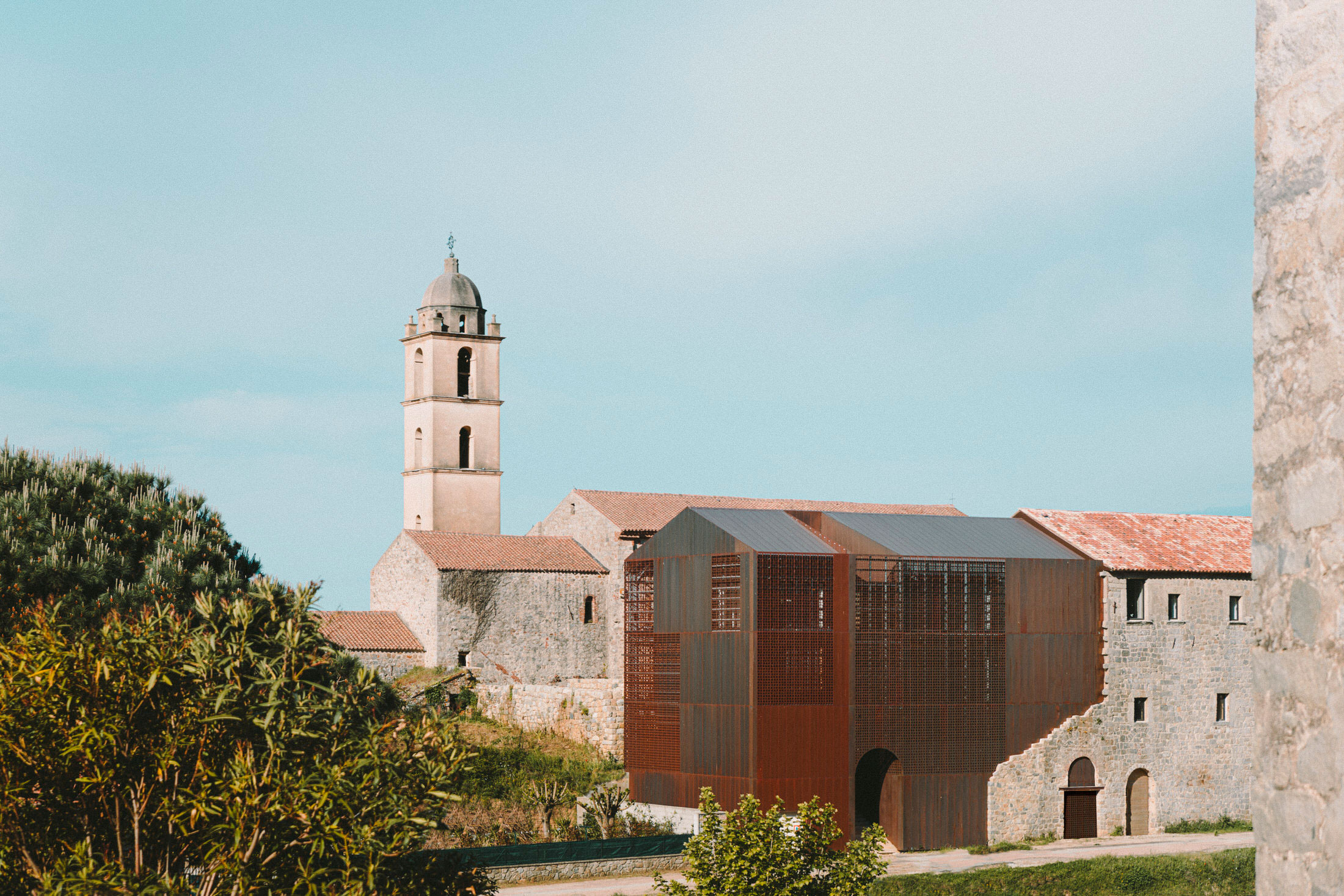
Of the modern-day structure, the crown jewel is, hands down, the copper skin that Amelia cast over the original stone facade, taking care not to cover it completely. Gleaming copper against rugged old stone is a scintillating duet of old and new, metal and earth.
“I liked the idea of a possible return to ruin, the idea of the copper being undone. This possibility is a curtsy to the past, to the convent’s Corsican heritage,” says Amelia, for whom copper was a default choice. “It’s propensity to capture light, to reflect it, to send it back to the sky like the prayers of the monks inside is incredible. It also directs sunlight inwards, diffusing it along the way,” she adds.
You could say reviving the Convent Saint-François was written in the stars for Amelia. As a self-professed believer, her spiritual side found quiet expression in the convent’s new design grail.
“I believe in higher, invisible forces. The convent is part of this belief. Housed high up on a promontory, it was a castle before becoming a place of prayer and retreat, chosen by monks aware of the absolute beauty of the site,” concludes the architect.
[Images courtesy of Amelia Tavella Architects.]
▼项目更多图片

